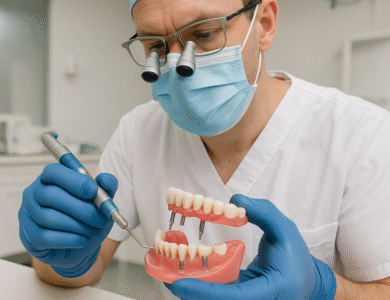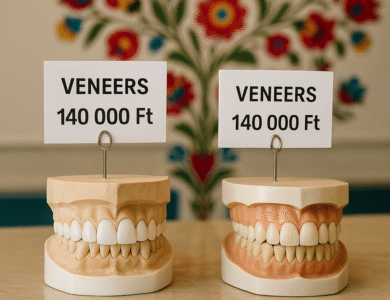
Helpful Step-by-Step Guide: How Many Dental Implants Can Be Done at Once in 2025
Helpful Step-by-Step Guide: How Many Dental Implants Can Be Done at Once in 2025
Many patients considering dental implants often ask: How many dental implants can be done at once? The answer depends on multiple factors, including your oral health, jawbone condition, anesthesia, and the type of implants being used. In this comprehensive guide, we’ll break down everything you need to know about dental implant quantity, procedural considerations, and aftercare.
Factors Affecting How Many Dental Implants Can Be Done at Once
Understanding the factors that influence how many dental implants can be done at once is crucial for anyone considering this procedure. Each patient’s situation is unique, and your dentist will provide a tailored recommendation.
Bone Density and Jaw Health
Sufficient bone density is crucial to support dental implants. Patients with significant bone loss may require bone grafting before multiple implants can be placed.
Overall Oral Health
Existing dental issues such as gum disease or infection may limit how many implants can be safely inserted at once.
Type of Implant
Traditional implants require more spacing, while mini implants or All-on-4 techniques may allow more teeth to be replaced in one session.
Surgeon’s Assessment
A dental specialist will evaluate your unique situation and recommend the optimal number of implants for safety, comfort, and long-term success.
Patient Comfort and Recovery
Placing too many implants at once can increase discomfort and lengthen recovery time. Your dentist may prefer staged procedures to ensure a smoother healing process.
Typical Dental Implants Quantity in a Single Procedure
While the number of dental implants a patient can receive in one session varies, knowing how many dental implants can be done at once helps set realistic expectations and plan recovery accordingly. In some instances, advanced procedures can allow for even more implants, especially when using zygomatic or All-on-4 techniques.
Single Tooth Implants
If you’re replacing a single missing tooth, only one implant is needed. This is the simplest scenario and typically involves no additional complexities.
Multiple Teeth Implants
If you’re replacing multiple teeth, the number of implants necessary will depend on the specific setup:
- For two or three missing teeth, two implants might suffice.
- For a full arch of teeth, a dentist might utilize 4-6 implants to create a stable foundation.
Advanced Techniques
In some cases, zygomatic implants or combined bone grafting procedures allow more implants in one session, even in patients with reduced bone volume.
Benefits of Placing Multiple Implants at Once
Opting for multiple dental implants in a single surgery can offer several advantages:
- Reduced Surgical Time: Fewer appointments mean more convenience for the patient.
- Cost-Effective: Lower overall costs since many components of the process can be combined.
- Enhanced Recovery: Recovery can often be streamlined when fewer surgeries are required.
Post-Procedure Considerations
After your implants are placed, follow-up care is essential. Discussing with your dentist exactly how many dental implants can be done at once ensures a safe procedure and smooth healing.
- Maintaining good oral hygiene.
- Attending follow-up appointments to ensure successful integration of the implants.
- Monitoring for any signs of discomfort or infection.
FAQ Section
How many dental implants can be done at once safely?
It depends on your oral health and jawbone condition. Most patients can receive between 1-6 implants in one session.
Can I get all my dental implants at once?
It depends on your dental health and your dentist’s assessment. While some patients may qualify for multiple implants at once, others may need to spread out the procedures for optimal safety and success.
What if I need bone grafting?
If you require bone grafting due to insufficient bone density, this may necessitate a two-stage process where grafting is done first, followed by the placement of implants later.
Are there age restrictions for dental implants?
While older adults can receive dental implants, children and teenagers may need to wait until their jawbone has fully developed.
Will I need anesthesia during the procedure?
Yes, most procedures will involve local anesthesia, and in some cases, conscious sedation or general anesthesia may be used, especially for multiple implants.
How long is recovery after multiple implants?
Recovery varies, but most patients can resume normal activities within a few days. Complete healing may take a few months for full osseointegration.
Conclusion – How Many Dental Implants Can Be Done at Once
The number of dental implants that can be placed at once depends on bone density, oral health, implant type, and the dentist’s recommendation. Multiple implants can be done safely with careful planning and professional guidance. Consulting a qualified implant specialist is essential for determining the best approach for your unique situation.
If you’re considering dental implants, take the first step by contacting a local specialist today. Additionally, download Docintur to connect with physicians, hospitals, and clinics easily. For inspiring before-and-after photos about oral and dental health, visit docintur.com.





